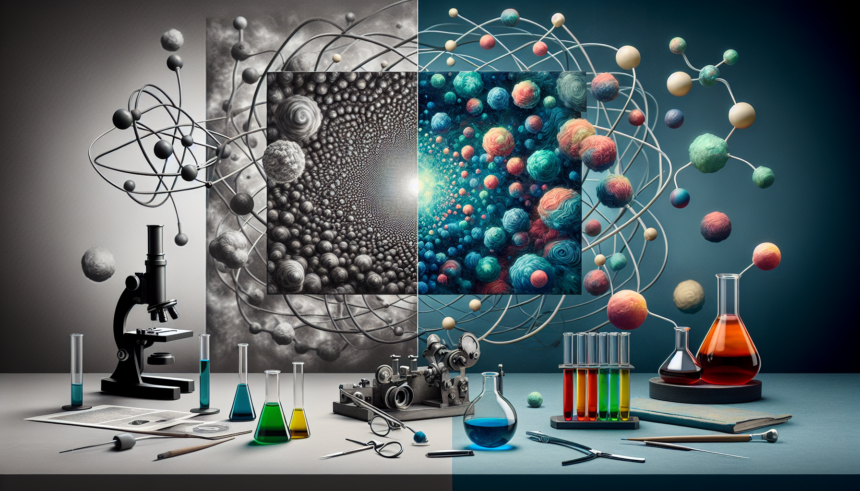The science of colour enhancement delves into a fascinating intersection of human perception, physics, and technology. Through various techniques, this field aims to improve the visual quality of images, videos, and even real-world environments. From medical imaging to entertainment, the applications of colour enhancement are vast and varied. This article explores the techniques used in colour enhancement and their wide-ranging applications.
The Basis of Colour Perception
To understand colour enhancement, it’s essential first to grasp how humans perceive colours. Human eyes have photoreceptor cells known as cones that detect light in three primary wavelengths: red, green, and blue. The brain processes the signals from these cones to produce the perception of different colours. However, various factors like lighting conditions and individual differences can affect this perception.
Techniques for Colour Enhancement
Histogram Equalization
One of the fundamental techniques in colour enhancement is histogram equalization. This method adjusts the contrast of an image by modifying the intensity distribution of the histogram. The goal is to achieve a uniform histogram, where each intensity level is equally likely. This technique is especially useful in images that have poor contrast due to inadequate lighting.
Gamma Correction
Gamma correction involves altering the luminance of an image to enhance its appearance. The gamma curve represents the relationship between the encoded luminance in an image and the actual displayed brightness. By adjusting this curve, gamma correction ensures that the output image retains more details in dark and bright areas.
Tone Mapping
Tone mapping is a technique often used in high dynamic range (HDR) imaging. HDR images have a wide range of luminance levels, from very dark to very bright. Tone mapping compresses this range so that it can be displayed on standard screens, which have a more limited dynamic range. This results in images that appear more natural and detailed.
Color Space Conversion
Different devices and applications rely on various colour spaces, such as RGB, CMYK, and HSL. Colour space conversion techniques translate colours from one space to another, ensuring consistency across different mediums. For instance, an RGB image might be converted to CMYK for printing, preserving the intended appearance.
Enhancing Specific Colours
Sometimes, enhancing specific colours in an image can emphasize important features. For example, in medical imaging, enhancing red and yellow hues can highlight areas of inflammation or abnormal growth. This technique is also popular in nature photography to make landscapes appear more vibrant and captivating.
Applications of Colour Enhancement
Medical Imaging
Colour enhancement plays a crucial role in medical imaging. Techniques such as histopathology and radiology rely on enhanced images to detect anomalies and diagnose conditions accurately. By highlighting specific colours or adjusting the overall contrast, these techniques provide clearer, more informative images that assist healthcare professionals.
Entertainment and Media
In the world of entertainment, colour enhancement is often used to create visually stunning images and videos. Cinematographers and photographers use these techniques to set the mood, emphasize themes, and make scenes more appealing. Software like Adobe Photoshop and After Effects offer various tools for colour correction and enhancement, enabling artists to bring their creative visions to life.
Surveillance and Security
Enhanced colour images can significantly improve the effectiveness of surveillance systems. In low-light conditions or environments with poor visibility, colour enhancement techniques can clarify details that might otherwise be missed. This is essential in applications such as facial recognition and license plate identification.
Remote Sensing
In remote sensing, satellites and drones capture images of the Earth for various purposes, including environmental monitoring, urban planning, and agricultural assessment. Colour enhancement techniques help in interpreting these images by highlighting specific features, such as vegetation health or water quality. This makes the analysis more accurate and actionable.
Augmented Reality (AR) and Virtual Reality (VR)
AR and VR technologies rely heavily on visual quality to create immersive experiences. Colour enhancement techniques are used to ensure that virtual elements blend seamlessly with the real world or to enhance the realism of entirely virtual environments. This improves user experience and makes these technologies more effective for training, gaming, and other applications.
Conclusion
Colour enhancement is a powerful tool that leverages scientific principles and advanced technologies to improve visual quality across various applications. Whether it’s aiding in medical diagnoses, creating compelling media content, enhancing surveillance systems, or making remote sensing data more actionable, the techniques of colour enhancement have a broad and significant impact. As technology continues to advance, we can expect even more innovative applications and sophisticated methods in this fascinating field.
FAQs
1. What is the primary purpose of colour enhancement?
The primary purpose of colour enhancement is to improve the visual quality of images or videos by adjusting colours and contrasts to make them more vivid, detailed, and informative. This is useful in various fields, including medical imaging, entertainment, surveillance, and remote sensing.
2. How does histogram equalization work in colour enhancement?
Histogram equalization works by adjusting the intensity distribution of an image’s histogram. The goal is to achieve a uniform histogram where each intensity level is equally likely, thereby improving the image’s contrast. This technique is particularly effective for images with poor contrast due to inadequate lighting.
3. What is the role of gamma correction in colour enhancement?
Gamma correction alters the luminance of an image to improve its appearance. By adjusting the gamma curve, which represents the relationship between encoded luminance and displayed brightness, this technique ensures that details in dark and bright areas are preserved, resulting in a more balanced and detailed image.
4. Can colour enhancement be applied in real-time applications?
Yes, colour enhancement can be applied in real-time applications, particularly in fields like surveillance and AR/VR. Advanced algorithms and powerful processing capabilities enable real-time colour adjustment, enhancing the visual quality of live feeds or interactive environments.
5. Why is colour enhancement important in medical imaging?
Colour enhancement is crucial in medical imaging because it helps in accurately detecting anomalies and diagnosing conditions. By enhancing specific colours or adjusting the contrast, medical images become clearer and more informative, aiding healthcare professionals in their assessments.










